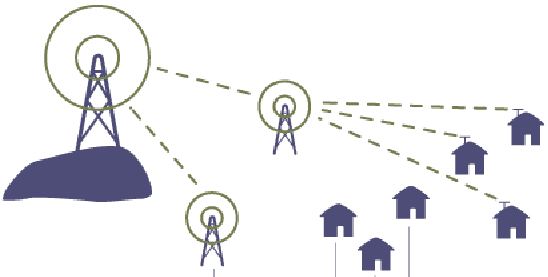National radio and television programs are broadcast using radio waves. Television signals are broadcast from London using narrow beams of microwaves to local transmitters and from local transmitters the signals are rebroadcast with wavelengths of about 0.6 m.

Radio signals use longer wavelengths that range from 3 m for VHF to hundreds of metres for medium and long wave.
Like all waves radio waves experience diffraction. This is an advantage since radio waves have wavelengths of the same order as many buildings and natural features such as hills so are diffracted into the spaces behind and between hills and buildings meaning there is less chance of blind spots where reception is poor.
On the other hand, radio waves, having long wavelengths, has low frequencies and this limits the amount of information they can carry.
When satellites are used to send tv signals a set top box must often be used or a special receiver built into the TV. The waves used have wavelengths of a few mm and these cannot be detect by ordinary tv aerials. The set top box changes the signal to longer wavelengths which can be interpreted by the TV set.
